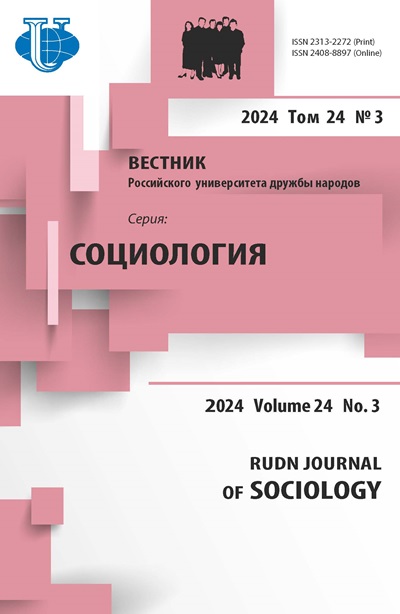Main areas for the sociological support of organizational risks diagnostics and prevention in the internal affairs bodies
- Authors: Dzhanteev TH1
-
Affiliations:
- Academy of Management Ministry of Internal Affairs of Russia
- Issue: Vol 16, No 2 (2016)
- Pages: 418-425
- Section: Sociology of management
- URL: https://journals.rudn.ru/sociology/article/view/6480
Cite item
Full Text
Abstract
The article considers the use of theoretical and applied sociological studies to identify and prevent negative consequences of the organizational risks in the internal affairs bodies, such as: insufficient quality of the organizational structure; failures in the design of organizational structures; poor coordination and regulation; inconsistency of resources provision; mistakes in the selection and placement of personnel; shortcomings in the organization of interaction with the public; incorrect definition of the needs of citizens in the field of law enforcement; poor quality of law enforcement services; inadequate training of personnel for the interaction with citizens. The author describes the role of the sociological support in the diagnostics of organizational risks, and pays particular attention to the factors contributing to the occurrence of undesirable situations and to the cause-and-effect relationships between various events associated with the risks. The article emphasizes the exceptional importance of forecasting negative consequences of risk situations and developing measures to minimize negative effects of organizational risks in law enforcement in general and in the internal affairs bodies in particular.
About the authors
T H Dzhanteev
Academy of Management Ministry of Internal Affairs of Russia
Author for correspondence.
Email: beshtau.2011@mail.ru
References
- Granaturov V.M. Ekonomicheskij risk: sushhnost', metody izmerenija, puti snizhenija [Economic Risk: Essence, Measurement, and Ways of Reduction]. M., 2016.
- Deljagin M.N. Gosudarstvennoe upravlenie: problemy i perspektivy [Public administration: Chal-lenges and prospects] // Problemy teorii i praktiki upravlenija. 1999. № 6.
- Dement'ev A.N., Kachushkin S.V. Institut konflikta interesov i predotvrashhenie korrupcii na gosudarstvennoj grazhdanskoj sluzhbe [Institute of Conflict of Interests and Prevention of Cor-ruption at the Civil Service]. M., 2004.
- Ivanov A.I. Klassifikacija riskov [Classification of risks] // Risk. 2001. № 6-7.
- Interv'ju s M.I. Braginskim [Interview with M.I. Braginsky] // Zakonodatel'stvo. 1998. № 2.
- Kazachenkova O.V. Konflikt interesov na gosudarstvennoj grazhdanskoj sluzhbe [Conflict of In-terests at the Civil Service]. M., 2004.
- Kirjushkin V.E., Larionov I.V. Osnovy risk-menedzhmenta [Basics of Risk Management]. M., 2009.
- Panfilova Je.A. Ponjatie riska: mnogoobrazie podhodov i opredelenij [The concept of risk: Diver-sity of approaches and definitions] // URL: www.http.teoria-practica.ru.
- Fedosenko V.A. Administrativno-pravovaja reglamentacija sluzhebnogo povedenija i ureguliro-vanija konflikta interesov v sisteme gosudarstvennoj grazhdanskoj sluzhby Rossijskoj Federacii [Administrative and Legal Regulation of the Official Conduct and Conflict of Interests at the Civil Service of the Russian Federation]. M., 2006.
- Filippov L.A., Filippov M.L. Otsenka riska po metodu Veksitskogo [Veksitsky’s Method for As-sessing Risks]. Barnaul, 2000.














